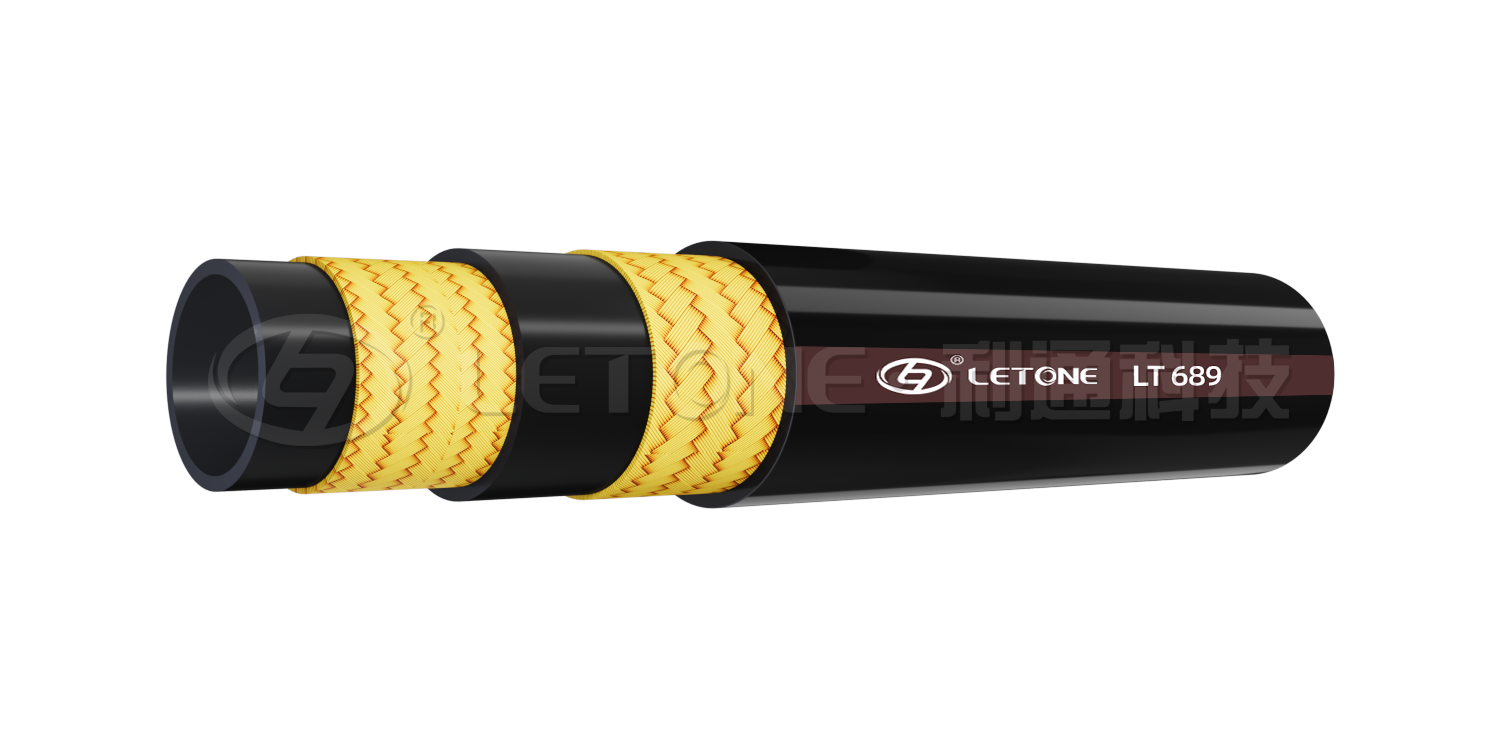2025-05-29 16:14:21
Oil resistant and wear-resistant industrial grade drainage and oil delivery hose
In modern industrial applications, with the continuous advancement of industrialization, the diversity and specialization of the industry's demand for conveying pipelines continue to increase. In order to meet the stringent requirements of liquid or gas transportation systems in various fields such as infrastructure construction, petrochemicals, and marine engineering, industrial grade drainage and oil transportation hoses have emerged. Among them, the DN150 large-diameter suction and discharge hose is widely favored for its excellent oil resistance and wear resistance, and has become an indispensable and important component in the industry.
Technical Background and Development Trends
1. Demand scenarios for high-pressure transmission
With the expansion of project scale and the improvement of technical requirements, traditional small-diameter pipelines are no longer able to meet current industrial demands. The design of DN150 large caliber not only overcomes the common resistance problem in high-pressure conveying, but also can accommodate larger conveying capacity, greatly improving work efficiency.
2. Material selection and characteristic analysis
In order to achieve oil and wear resistance, DN150 suction and discharge hose materials are usually made of high-strength synthetic rubber or polyurethane materials. These materials not only have excellent compression resistance and aging resistance, but also have good flexibility, and can withstand various complex operations on the site. In addition, the internal reinforcement layer adopts high-quality fiber weaving technology, greatly improving the pressure resistance and service life of the pipeline.
Detail design and structural analysis
1. Structural design optimization
After multiple optimizations, the structural design of the DN150 large-diameter suction and discharge hose has formed a multi-layer composite structure. Usually composed of an inner adhesive layer, a protective adhesive layer, a reinforcement layer, and an outer adhesive layer, each layer plays an irreplaceable role. The inner adhesive layer directly contacts the conveying medium and has extremely strong corrosion resistance and wear resistance; The reinforcement layer adopts a winding steel wire structure or fabric reinforcement, which ensures the stability of the pipeline under high load operation with excellent compressive and impact resistance.
2. Adaptability to special working conditions
In application scenarios, the DN150 large-diameter rubber hose demonstrates its excellent environmental adaptability. It can maintain efficient conveying characteristics under both extreme cold and high temperature conditions. Thanks to the innovative design of the hose, it can withstand temperature changes ranging from -30 ℃ to+80 ℃, making it crucial in environments such as factories, oil extraction drilling, and ship unloading around the world.
Application Fields and Successful Cases
1. Application in the petrochemical industry
The petrochemical industry is one of the main applications of DN150 large-diameter suction and discharge rubber hoses. Every year, the global transportation and processing of countless tons of oil and chemicals require high levels of corrosion and wear resistance for processing and transportation equipment. DN150 rubber hose provides extremely high reliability for chemical transportation in oil fields and chemical plants due to its outstanding performance.
2. Use in infrastructure
In infrastructure construction, DN150 large-diameter rubber hoses are often seen on large construction sites and urban sewage treatment plants. Used for laying underground pipelines, rainwater drainage, and groundwater control, it helps improve construction efficiency and reduce environmental impact. Many engineering projects have shown through empirical evidence that the use of DN150 large-diameter suction and discharge hoses has increased efficiency by nearly 20% and reduced pipeline failure rates.
3. Essential components for ocean engineering
The marine environment requires transportation equipment to have super strong salt corrosion resistance and wear resistance. The DN150 large-diameter rubber hose has won the trust of users in marine engineering due to its stable and reliable characteristics and precise manufacturing process. It understands everything from offshore oil extraction to the liquid supply needs of search and rescue ships.
How to choose a suitable DN150 suction and discharge hose
When choosing a DN150 large-diameter suction and discharge hose, careful analysis should be conducted based on specific working conditions. Factors to consider include the characteristics of the conveying medium (temperature, pH, corrosiveness, etc.), working pressure, ambient temperature, actual working length, and frequency. Choosing pipes with appropriate materials and designs can not only extend the service life of equipment, but also effectively save maintenance costs.
Customization
Many hose manufacturers provide customized services, adjusting the length, material combination, and reinforcement layer structure of hoses according to customers' special needs, to create solutions suitable for various complex conditions. Some manufacturers provide services such as installation guidance and maintenance training to help customers easily cope with future usage and maintenance issues.
Summary and Prospect
The importance of DN150 large-diameter suction and discharge hose in the industrial conveying field is self-evident due to its extraordinary performance and wide applicability. In the future, with the advancement of technology and the development of materials science, its application prospects in intelligent manufacturing, environmental protection technology, and new energy fields are limitless. Through continuous innovation and technological improvement, the DN150 large-diameter suction and discharge hose will further promote the efficiency and safety of related industries.
At the same time, its position in domestic and international markets will steadily improve, injecting new momentum into the future of industrial efficiency, safety, and environmental protection. The research and development in this field will not only bring economic benefits, but also make important contributions to sustainable development. We look forward to seeing more technological breakthroughs and application extensions centered around this in the near future, making industrial transportation a more intelligent, green, and efficient engineering practice.


Leave a Comment